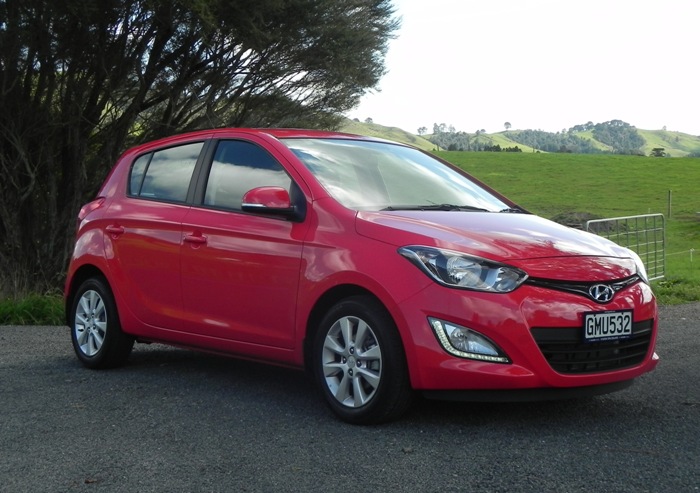
Car reviews
Read our expert car reviews - where we give insight into the latest vehicles to hit our roads.
05 October 2012
Hyundai, the largest Korean car maker, is taking the world by storm with impressive looking vehicles. The designers, in Russelsheim Germany, have done a fantastic job revolutionising the once predominantly radical designs to captivating European style cars. Hyundai is advancing at a fast rate in all markets around the world and this rapid increase shows no sign of winding down.

Hyundai, the largest Korean car maker, is taking the world by storm with impressive looking vehicles. The designers, in Russelsheim Germany, have done a fantastic job revolutionising the once predominantly radical designs to captivating European style cars. Hyundai is advancing at a fast rate in all markets around the world and this rapid increase shows no sign of winding down. Andy Sinclair, Hyundai NZ General Manager, is aiming for a 10% NZ market share by the end of 2013; a target that isn’t unachievable.
The eye-grabbing fluid lines and sculptured body panels seen on the new i30 are carried over to the latest entry, the facelift i20. The new model has a revamped front-end, spruced-up rear bumper and sleeker lamps all-round. The only difference in the overall size of the facelift model is extended front and rear overhangs, an extra 55mm in total.
Inside the vehicle it looks almost identical to the outgoing model with easy to use switches for the air-conditioning and radio, which are located at the centre of the dashboard. The raised seating position give the driver a clear view of the surroundings and interior space is generous for a car of this size. The i20, with 290 litres luggage area, can boast to have one of the bigger boot spaces in this segment which is handy for loading larger items such as golf clubs.
The top seller in the i20 range has always been the Elite model but for the latest entrant, with the options of GL and GLS versions, the Elite choice is crossed off the price list. Hyundai believe the GLS, with its high level of specification, is suitable to take the leading role.
Standard on the GL model is 14-inch steel wheels while the GLS version is fitted with 15-inch alloys. The GLS model adds climate-control air-conditioning, cruise control/speed limiter, LED daytime running lights as well as front fog lamps and reverse parking sensors.
The same 1.4L engine is used and it provides 73.5kW of power and 136Nm of torque. Consumption figures are claimed at 5.3L/100km for the stick-shifter, a 13% gain on the previous model, and 5.9L/100km for the auto-box, a 9% improvement. The scrawny 1.4L engine responds surprisingly well and tackles the uphills in a feisty manner. The handy six manual-gears provide all the correct ratios to make driving the i20 an enjoyable experience although the old school, four-speed, automatic-transmission could perform better with a few more cogs tucked into it.
The MacPherson-strut front suspension and the rear torsion beam setup are fine-tuned for NZ roads. The handling is impressive for a car of this size and the suspension soaks up bumps in the road nicely. The operation of the Vehicle Stability Management, when turning into the bends in the road, can be felt but the notchy sensation the system produces, along with the need to encourage the steering to self centre is distracting.
Hyundai i20 is awarded a five star ANCAP safety test rating and six airbags assist in protecting occupants in the event of an accident. Active safety features include Vehicle Stability Management (VSM), Electronic Stability Control (ESC) and Traction Control System (TCS).
Pricing on the new models stays unchanged from the previous list, with the manual transmission GL model retailing for $25,490 and the GLS stickered at $25,990. The Auto-transmission kicks off at $25,990 for the GL and $26,990 for the GLS model.
Hyundai are aware some competitor cars in this segment are easier on the bank balance, but they believe the good mix of equipment levels fitted to the i20 will make it a favourite amongst buyers.
The competition in the light car segment is tough with the Suzuki Swift, Mazda 2, Toyota Yaris and Holden’s Barina, along with Hyundai’s i20 all fighting for the top-spot.
The i20 has a long way to go to catch up to the front runners, Suzuki’s Swift and Toyota’s Yaris in this segment of the market. But so far this year, 454 i20’s have been registered on NZ roads and Hyundai is expecting to sell another 146 units by the end of December; a target which should be achievable for Korea’s number one brand.